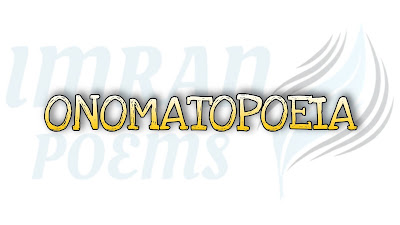Onomatopoeia: Bringing Sounds to Life in Language
Boom! Crunch! Pop! Onomatopoeia—though it may look tricky to spell—is incredibly easy to use and immediately recognizable once you know what it is. Simply put, onomatopoeia is when a word sounds like what it describes. Examples such as hiss, snip, thud, and clonk give us the sounds they represent just by reading or saying the word aloud. This effect makes onomatopoeic words exceptionally powerful for adding vivid sound elements to writing.
One of the most common places you might find onomatopoeias is in comic books, where phrases like Pow! and Wham! help readers imagine the impact and sounds of a scene. Beyond comic books, animal sounds also serve as great examples of onomatopoeia. In English, dogs go woof, cats go meow, and cows go moo. Each of these words mimics the actual sounds the animals make, bridging the gap between spoken language and real-world sounds.
Using Onomatopoeia in Writing
When used effectively, onomatopoeias add vividness and rhythm to writing, helping readers experience sounds almost as if they were there. They’re similar to literary devices like alliteration or consonance, but with a unique quality that allows them to mimic sounds directly. Let’s consider the impact they can make by looking at an example.
Take a basic sentence:
Diego lay awake, listening to the unending sound of the clock on the mantelpiece.
This sentence works fine, but it lacks a certain liveliness. Now, if we add a simple onomatopoeia:
Diego lay awake, listening to the relentless tick-tock of the clock on the mantelpiece.
Reading the revised sentence aloud, the tick-tock draws our attention to the rhythmic, almost oppressive nature of the sound. The onomatopoeic word choice creates a stronger impression of a clock ticking away, drawing readers into the scene with auditory imagery. In this way, onomatopoeias act similarly to visual imagery, only instead of helping readers see something, they help readers hear it.
Beyond Onomatopoeia: Sound Symbolism
The effect of sound in language goes beyond just onomatopoeia. There’s also a phenomenon known as sound symbolism, where certain sounds carry meanings across groups of words. For example, words associated with light or shine often start with gl- sounds: glow, glisten, glitter, gleam, and glimmer. These gl- words evoke an idea of something bright or reflective.
Likewise, words like slime, slippery, slick, slide, slither, and slink share a sl- sound, hinting at smooth, sometimes wet or slippery surfaces. Sound symbolism gives language a subtle cohesiveness and enhances the emotional or sensory impact of words.
The Bouba-Kiki Effect: Connecting Sound and Shape
To understand just how connected sound and meaning can be, there’s a fascinating study involving the Bouba-Kiki Effect. In 1929, Wolfgang Köhler first introduced this concept, and it was later repeated in 2001 by researchers V.S. Ramachandran and Edward Hubbard. In their experiment, participants were shown two shapes: one round and one spiky. They were told these shapes were named “Bouba” and “Kiki” and were asked to match the names to the shapes. Astonishingly, 95 to 98 percent of people assigned “Bouba” to the rounded shape and “Kiki” to the spiky one, suggesting that certain sounds naturally fit specific forms.
Why Onomatopoeia Matters in Writing
Whether you’re writing prose, poetry, or even dialogue, onomatopoeias can enhance the reader's experience. They’re engaging, sensory, and versatile, adding layers of immersion to any piece. Even if you’re unsure about using one, try it out—it can lend energy and presence to your work. And, after all, these words aren’t just effective—they’re fun to say. Try out a few: Kaboom!, Whizz!, or Snap!
In sum, onomatopoeia isn’t just a quirky, optional device; it’s a powerful tool that adds richness to language and strengthens the reader’s connection to your writing.
~~~


Post a Comment